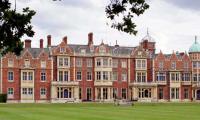The brutal torture of Tayyaba, a 10-year-old housemaid, in Islamabad has triggered the advocacy of child rights in the media and higher judiciary. Although it is a noble aim, the overwhelming support for child rights on its own does not provide an adequate explanation of the issue. We must take into account the overall context of child labour.
More than being influenced by lack of awareness or the inadequate legal framework to regulate these rights, child labour in Pakistan is an outcome of excruciating poverty, mainly concentrated in the rural areas.
The Pakistan Institute of Labour Education and Research (Piler) tells us that child labour in the country has quadrupled during the last two decades. The government is so indifferent to the issue that it has not conducted a survey on child labour since 1996. Credible estimates put the number of child workers in Pakistan at 15 million.
The bitter reality is that the under-priveleged make their children work in the homes of rich and middle-class people because they cannot afford to feed them. Child labour is a matter of survival, not an option for the poor. Official surveys and statistics are a testament to this fact.
According to the statistics of the Ministry for Planning, Development and Reform, 29.5 percent of the country’s population – or around 55 million people – live below the official poverty line of Rs3,030 per month. Ironically, a small middle-class family would spend this amount on one meal. However, a poor worker is most likely to make do with this meagre amount to address his family’s monthly needs.
Hunger – an inevitable consequence of extreme poverty – is quite visible in our rural areas. International surveys reflect this situation. According to the 2016 Global Hunger Index, 22 percent of Pakistan’s population is undernourished. Pakistan ranked 107 out of 118 developing countries. It was worse off than India, which ranked 97th on the index.
The actual magnitude of misery is much higher than the official figures suggest. A person earning even twice the official figure of Rs 3,030 cannot afford two meals a day for himself for a month, let alone other essentials. A more realistic approach would involve categorising all those who live below the poverty line and earn less than Rs 6,000 per month (or $2 per day). By this standard, more than half of our population or at least 100 million people live below the poverty line. Another 30 percent of the population teeters at the poverty fence. This means around 160 million people in this country survive on a bare minimum of funds.
It would be naive to expect poor people to either keep their children at home or send them to school. Most children from poor families are forced to find jobs and fulfil the needs of their families. It comes as no surprise that 25 million primary school-age children are out of schools. Many of them are toiling away at some job or the other.
A large segment of the poor survive under subhuman conditions. The children and women of these families work as domestic help. They eat the leftovers of the rich or the middle class. They wear second-hand clothes and live in areas covered with litter and sewage. When they fall ill, they turn to quacks for medical assistance. At every step, they are humiliated and insulted.
The existence of the dispossessed is considered a norm forstate and society. We may not like to admit it but the rich do not consider the poor to be human and are unlikely to grant them their rights. Poverty is deemed a matter of fate. It is believed that the poor are destined to be poor. They are not entitled to a decent life and should therefore serve the rich.
The concentration of wealth and income within a small segment of society is the root of poverty. While the elite may differ on religious interpretation in a host of matters, there is a consensus on the sanctity of owning property and wealth. In 1990, the Federal Shariat Court declared land reforms un-Islamic.
Today, not a single mainstream political party stands for the fair distribution of wealth and income and the welfare of the downtrodden.
The state practically perpetuates dispossession and misery of the public. Many acres of state land that lies uncultivated is allotted to win the loyalties of the civil and military bureaucracies but cannot be distributed among the landless farmers. In the last 30 years, no development funds were made available for more than 4,000 katchi abadis in Punjab while billions of rupees were spent on luxury projects.
The state’s complicity in marginalising the poor is visible in all spheres. More than 80 percent of labourers receive less than the government-fixed minimum wage and are deprived of social security benefits. But no state institution springs into action to protect their needs. When the application of law affects the interests of the elite, the state gets cold feet. The focus is on rhetoric and showing off rather than on the substance.
Child rights cannot be protected and child labour cannot be abolished by addressing the symptoms. The poverty faced by 80 percent of the population also needs to be cured.
Email: adnanadilzaidi@gmail.com
Now, court can only act upon applications filed under its jurisdiction
Fact is that let alone Pakistan, Trump hasn’t really spoken much for any South Asian country, not even India
By embracing quantum mechanics, humanity has unlocked technologies once thought unimaginable
Regular reporting could ensure accountability and adaptive management
Report assesses readiness of over 190 countries to meet demands of the international job market
In Pakistan, prospect of introducing Starlink has been topic of discussion, particularly due to frequent internet...







